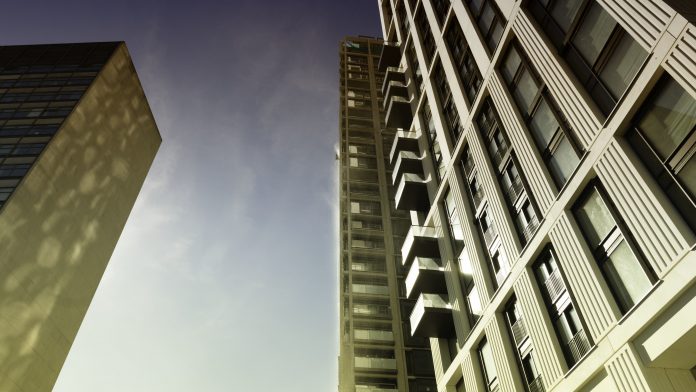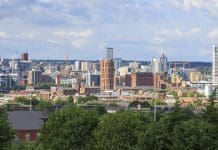Housing secretary, Robert Jenrick has announced building safety measures that go further to ensure residents are safe in their homes, revealing that slow improving safety standards will “not be tolerated”
To give effective oversight of the design, construction, and occupation of high-risk buildings – a regulator will be at the heart of a new regime – and established as part of the Health and Safety Executive (HSE).
Building owners are responsible for ensuring their buildings are safe and where there is no clear plan for remediation, the government will work with local authorities to support them in their enforcement options.
‘Name and shame’ failure to remove unsafe ACM cladding
Speaking in the House of Commons, Jenrick also made clear that from next month he will start to name building owners where remediation has not started to remove unsafe Aluminium Composite Material (ACM) cladding from their buildings.
While government action in this area has led to considerable progress to remove unsafe cladding, there are still some building owners who have been too slow to act.
Jenrick confirmed the government will consult on extending the ban on combustible materials to buildings below 18 metres and we will seek views on how risks are assessed within existing buildings to inform future policy.
The package comes as the Prime Minister has written to the chairman of the Grenfell Tower Public Inquiry, Sir Martin Moore-Bick, updating him on the government’s response to Phase 1.
The Prime Minister and Housing Secretary also met with bereaved, survivors and residents of the Grenfell Tower fire in Downing Street last week.
New package of measures includes:
Building Safety Regulator
The HSE will quickly begin to establish the new regulator in shadow form immediately, ahead of it being fully established, following legislation.
It will raise building safety and performance standards, including overseeing a new, more stringent regime for higher-risk buildings.
With a strong track record of working with industry and other regulators to improve safety, they will draw on experience and the capabilities of other regulators to implement the new regime. Dame Judith Hackitt will chair a Board to oversee the transition.
Chair of the Health and Safety Executive, Martin Temple said: “We are proud the government has asked HSE to establish the new Building Safety Regulator.
“HSE’s vast experience of working in partnership with industry and others to improve lives will ensure people are confident the creation of the new regulator is in good hands.”
Building safety for multi-storey, multi-occupied buildings
Recent high-rise fires, including that in a block of student flats in Bolton in November 2019, have highlighted that many building owners have still not taken sufficient measures to ensure the safety of residents in buildings at all heights.
The government-appointed independent expert advisory panel (IEAP) has clarified and updated advice to building owners on actions they should take to ensure their buildings are safe, with a focus on their external wall systems, commonly referred to as cladding.
This consolidated advice simplifies the language, consolidates previous advice into one place, and – vitally – makes clear that building owners need to do more to address safety issues on residential buildings under 18 metres.
It additionally reflects the independent panel view that cladding material comprised of ACM (and other metal composites) with an unmodified polyethylene core should not be on residential buildings of any height and should be removed.
Fire doors
The consolidated advice also makes clear the actions building owners should take in relation to fire doors.
The government welcomes the commitment by the Association of Composite Door Manufacturers to work with building owners to remediate their doors which failed tests.
We will continue to monitor the situation closely to ensure that this commitment is followed through.
Buildings with ACM cladding
To speed up remediation, we will be appointing a construction expert to review remediation timescales and identify what can be done to improve pace in the private sector.
To ensure cost is not a barrier to remediation, the government is considering different options to support the remediation of buildings. We are examining options to mitigate costs for individuals or provide alternative financing routes.
Cladding ban
The government has also launched a consultation into the current combustible cladding ban, including proposals to lower the 18-metre height threshold to at least 11-metres.
Commitment to bringing change
Jenrick said: “The government is committed to bringing about the biggest change in building safety for a generation.
“Progress on improving building safety needs to move significantly faster to ensure people are safe in their homes and building owners are held to account.
“That’s why today I’m announcing a major package of reforms, including establishing the Building Safety Regulator within the Health and Safety Executive to oversee the new regime and publishing consolidated guidance for building owners.
“Unless swift progress is seen in the coming weeks, I will publicly name building owners where action to remediate unsafe ACM cladding has not started. There can be no more excuses for delay, I’m demanding immediate action.”














